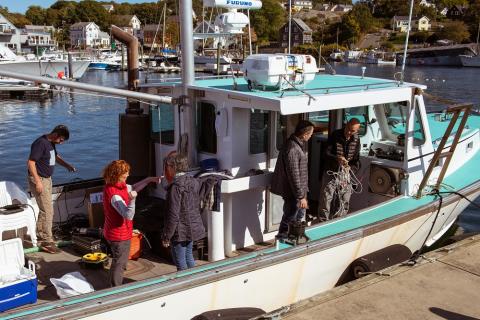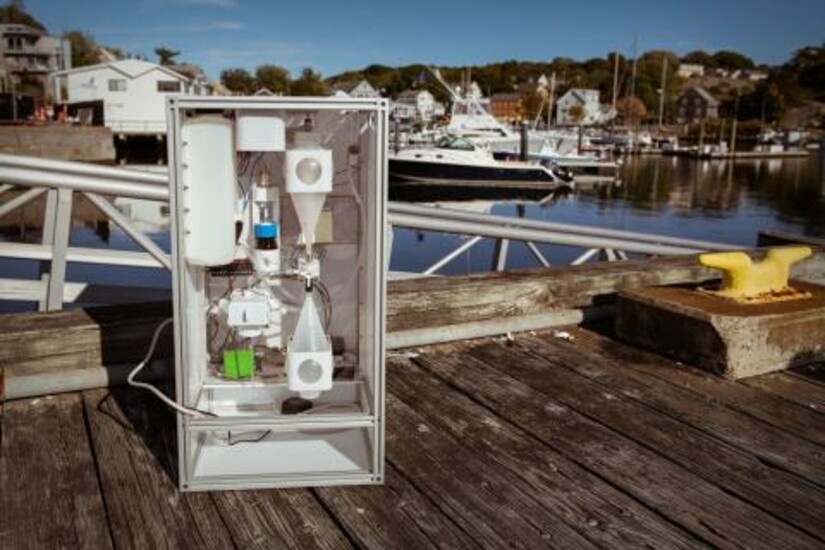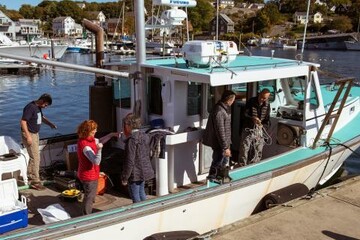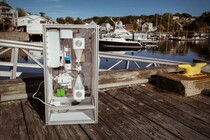That’s Not Tea in Boston Harbor: Draper and EPA Sample for Microplastics
CAMBRIDGE, MA—Minuscule pieces of plastic found in Boston Harbor could help scientists gain a better understanding of the concentration and location of the pollutants, called microplastics, in the world’s oceans and rivers. Recently a team of scientists sampled water from numerous points in the harbor and used different methods for identifying microplastic particles, an important step in developing a deployable system. Organizations aboard R/V Michael Craven included Draper; the Environmental Protection Agency (EPA), Region 9 office; the Massachusetts Division of Marine Fisheries and the New England Aquarium.
“Samples from the busy waterways of Boston Harbor have a high concentration of particles compared to those from the open ocean,” said Lou Kratchman, a Draper engineer who is working with the EPA to develop a real-time microplastic measurement system. “We observed some particles using ultrasound measurements that we suspect to be microplastics,” Kratchman said. “The EPA will perform a thorough analysis of all the samples, which will provide insight into the current state of microplastic pollution in the Harbor.”
The EPA Region 9 team is developing standards for microplastics sampling and laboratory analysis for ASTM International, which scientists can use to help harmonize data collected internationally on microplastics pollution.
Sampling ocean water is a critical step in the development of an automated microplastic sensor system. Real-time data about microplastic pollution in oceans and waterways will help scientists better understand the problem. “These data will provide a plastic pollution baseline to measure the effectiveness of waste management mitigation and interventions and to improve predictions about trends in microplastic pollution,” said Anna-Marie Cook of the EPA Region 9 team.
Sheila Hemami, who manages Draper’s work on the program under the company’s Global Challenges initiative, said the project is part of a larger trend. “Making environmental data about microplastics open and accessible to the public would create transparency and collective accountability for a problem that impacts us all,” Hemami said. “Microplastics in the water truly is a global challenge.”
Released November 11, 2019













